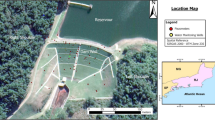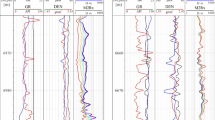Abstract
Offshore Contractors engaged in the business of installing pipelines and subsea structures routinely rely on third party survey data to identify and assess the risk of surface and buried geohazards. In many cases, route or site survey data are supplied to a marine Contractor with the latter having little or no input to the manner in which the geophysical and geotechnical data are acquired, processed and reported. Often, the completed survey reports indicate that neither data acquisition nor the subsequent data processing were carried out with the ultimate goal of the survey or the end user in mind. This lack of focus at the survey stage can contribute to incorrect or over-optimistic assessments of geohazard risk, with serious impact on offshore installation operations as a consequence. Two case studies from the North Sea are discussed where inappropriate data processing and reporting of geophysical data had a negative impact on offshore installation operations; these are used as a basis for a more general discussion of the underlying reasons for the production of engineering survey reports which are “not-fit-for-purpose”.





Similar content being viewed by others
References
British Standard 5930 (1999) Code of practice for site investigations (with Amendment No. 1 of 31 Dec 2007) 194 p
Cameron TDJ, Crosby A, Balson PS, Jeffery DH, Lott GK, Bulat J, Harrison DJ (1992) United Kingdom offshore regional report: the geology of the southern North Sea. (London: HNSO for the British Geological Survey) 152 p
Dyer KR, Huntley DA (1999) The origin, classification and modelling of sand banks and ridges. Cont Shelf Res 19(10):1285–1330
International Marine Contractors Association (2006) Guidelines for the use of multibeam echosounders for offshore surveys. IMCA S 003, Rev 1, 38 pp
International Society for Soil Mechanics and Geotechnical Engineering (2005) Geotechnical & geophysical investigations for offshore and nearshore developments, 101 p
Kvalstad TJ (2007) What is the current “Best Practice” in offshore Geohazard investigations? A State-of-the-Art Review. OTC 18545
Long D, Wilson CK (2004) An assessment of the ground conditions for trenching pipelines in the Murdoch area, southern North Sea. Commissioned Report CR/04/021, British Geological Survey, 94 p
Mosher DC (2010) Geohazard mapping with multibeam sonar: resolution and the need for 3-D, this volume
Mosher DC, Simpkin PG (1999) Status and trends of marine high-resolution seismic reflection profiling: data acquisition. Geosci Can 26(4):174–188
NORSOK (2004) Marine soil investigations. NORSOK Standard G-001, Rev 2, 66 p
Norwegian Geotechnical Institute (2005) Offshore geohazards. Summary Report, Research institution-based strategic project 2002–2005. NGI-Report 20021023-2, 72 p
OSIG (2004) Guidance notes on geotechnical investigations for marine pipelines, OSIG Rev 3, 47 p
OSIG (2005) Guidance notes on site investigations for offshore renewable energy projects, OSIG Rev 02, 25 p
Acknowledgments
This paper is written by a classically-trained geologist who ended up in the subsea construction industry through the cruel quirks of fate and who has come to the difficult self-realisation that engineers can have valid points to make in the discussion of geoscience issues. It is also inspired by many discussions with colleagues and acquaintances on both sides of the academic/industry and geoscience/engineering boundaries, which repeatedly remind me of how little effort is used on trying to understand and respect those on the other side of disciplinary fences. The paper has benefitted from revisions based on the astute comments and suggestions provided by the reviewers, to whom I am very grateful. Lastly, warm thanks to Dr. Francesco Chiocci and the organisers for a stimulating conference—a fine example of the type of multidisciplinary communication appealed for in this paper.
Author information
Authors and Affiliations
Corresponding author
Rights and permissions
About this article
Cite this article
Dyer, J.M. Geohazard identification: the gap between the possible and reality in geophysical surveys for the engineering industry. Mar Geophys Res 32, 37–47 (2011). https://doi.org/10.1007/s11001-011-9137-x
Received:
Accepted:
Published:
Issue Date:
DOI: https://doi.org/10.1007/s11001-011-9137-x




